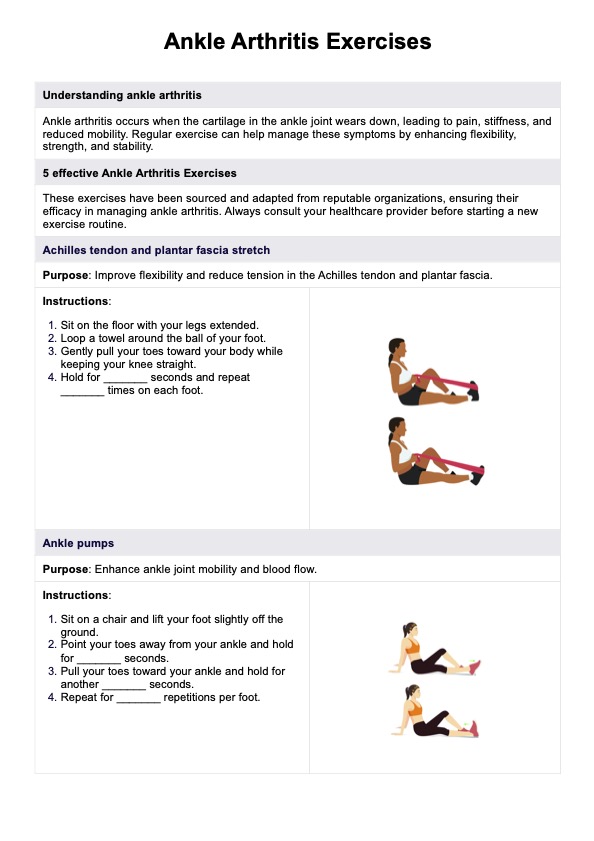Yes, walking can be beneficial for ankle arthritis as it helps maintain joint mobility and improves circulation. However, it is essential to walk at a comfortable pace and avoid overexertion to prevent further joint stress.

Ankle Arthritis Exercises
Download Carepatron's free PDF with exercises to ease ankle arthritis pain and improve mobility. Manage symptoms with these helpful techniques.
Use Template
Ankle Arthritis Exercises Template
Commonly asked questions
The best exercise for ankle arthritis often includes gentle stretching and strengthening movements, such as ankle pumps and calf stretches. These exercises improve flexibility, reduce stiffness, and support joint stability.
Wearing ankle support can help alleviate pain and provide stability for an arthritic ankle. It is particularly useful during physical activity to minimize stress on the joint and prevent further injury.
EHR and practice management software
Get started for free
*No credit card required
Free
$0/usd
Unlimited clients
Telehealth
1GB of storage
Client portal text
Automated billing and online payments











